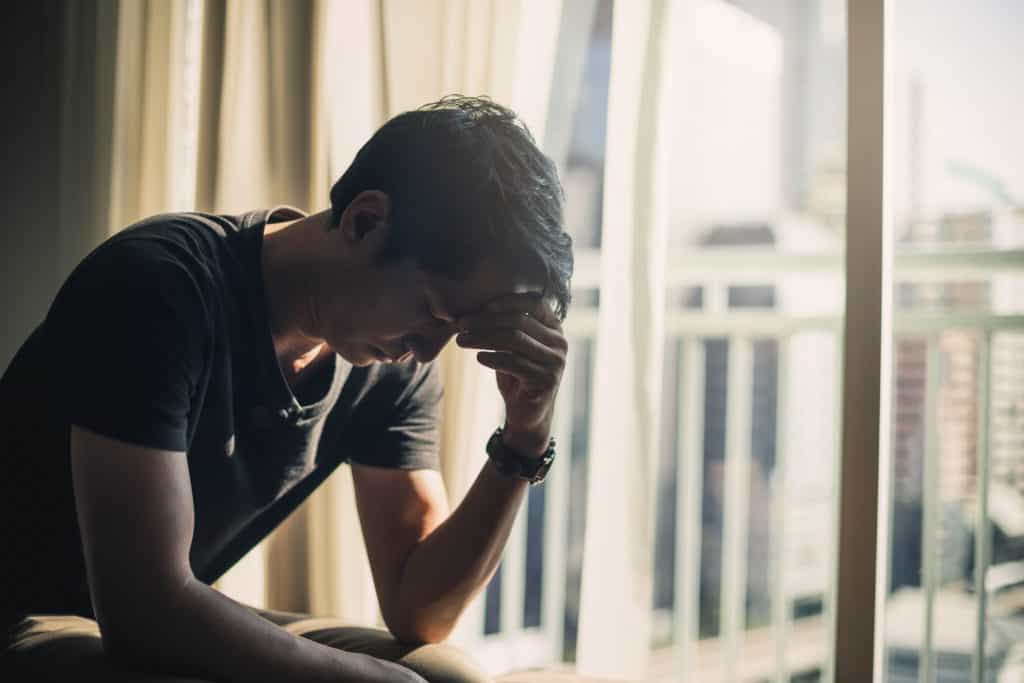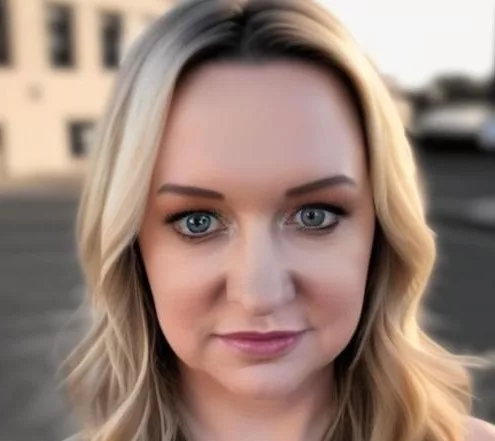In 2019, over 300 million people in the United States were suffering from an anxiety disorder.1(anxiety disorders) In addition, over 20 million people were diagnosed with a substance use disorder (addiction to a substance) within the same year.2(the addiction public health crisis) With such high numbers, it is no surprise that millions of people bear the burden of both an anxiety and substance use disorder diagnosis every year. But why do they occur together?
This page will explore the variety of anxiety disorders that exist, how to recognize them, their connection to substance use disorders, and how to get help.
What Is Anxiety?
According to Oxford Languages, anxiety, as experienced by the general population, is defined by feelings of worry or unease over a particular situation, event, or set of circumstances. Though related, the above definition is for distinct anxiety disorders.
People with anxiety disorders experience excessive fear and anxiety that persist beyond what is appropriate for the given situation.3(pg.189 para3) Having an anxiety disorder often causes physical symptoms and impairment in daily functioning.3(pg.189 anxiety disorders) The many types of anxiety disorders may occur at different stages of life and with various triggers for its symptoms.3(pg.189-190)
Types of Anxiety Disorders
Anxiety disorders of any type may occur throughout life, but some are more prevalent in children than adults.3(pg.192 prevalence) Some examples of anxiety disorders that occur in adults are:
- Specific phobias cause people to have disproportionate fear or anxiety surrounding the anticipation or actual presence of a specific object or situation.3(pg.198-199 diagnostic features)
- Social Anxiety Disorder causes an experience of fear or anxiety when a person is in social situations that could allow them to be scrutinized or negatively evaluated by others. Being in social situations nearly always causes anxiety.3(pg.203 diagnostic features)
- Panic Disorder is a condition in which a person experiences recurring, unexpected, panic attacks. There is no identified trigger for the attacks, and they can often occur during states of relaxation.3(209 diagnostic features)
- Generalized Anxiety Disorder typically causes people to experience excessive worry about their usual life difficulties. While the content of worry may be normative, the person is unable to put off the anxiety. The anxiety may persist for longer than usual, occur without a trigger, and interfere with their ability to function in relationships or handle responsilibities.3(222-223 diagnostic features)
- Substance/Medication-Induced Anxiety Disorder develops after a person has started a medication, been exposed to a toxin, or begun misusing a substance. Once the substance or medication is no longer taken, the symptoms will improve over time.3(pg. 228, diagnostic features)
Signs and Symptoms of Anxiety Disorders
While there are different types and triggers, people who are diagnosed with an anxiety disorder often endure similar signs and symptoms.3(pg.189) Common signs and symptoms of anxiety disorders include:3(pg.189)
- Excessive fear or worry
- Avoiding or attempting to avoid the triggering situation
- Panic attacks
- Racing heart
- Feeling restless or on edge
- Feeling easily fatigued
- Problems with sleep
- Concentration difficulties
- Irritability
- Sweating3(pg.223, associated features)
- Nausea3(pg.223, associated features)
- Diarrhea3(pg.223, associated features)
- Shortness of breath3(pg.223, associated features)
- Dizziness3(pg.223, associated features)
- Trembling, twitching, or shaky muscles3(pg.223, associated features)
- Muscle aches3(pg.223, associated features)
While people who experience normative anxiety may have some of the above symptoms in relation to a stressful situation, people with anxiety disorders experience them to a greater degree and usually for a longer duration than would be otherwise expected.3(pg.189 para3)
Causes for Anxiety Disorders
Several factors may contribute to the development of an anxiety disorder in a person, depending on the type of disorder. Potential contributing factors may stem from the following categories:3(risk and prognostic factors, pg.193, 196, 200, 205, 211)
- Temperament: increased disposition toward negative emotions, anxiety sensitivity
- Environment: significant life stress (abuse, significant or early loss), parental examples of specific inhibitions, smoking
- Genetic Factors: inherited genes from a family history, or a history of other mental illnesses
- Physiological Influences: physical stresses experienced in early development, propensity for fainting, use of substances
Substance Use Disorders and Anxiety
Mental illnesses, including anxiety disorders, commonly occur alongside substance use disorders.4(paragraph1) In 2018, The National Survey on Drug Use and Health showed that 25% of people with serious mental illnesses (SMI) also suffered from a substance use disorder (SUD), and over 15% with SUDs also had an SMI.5(chart) There are three main reasons for their association with each other:4(opening paragraphs)
- Mental illness and substance use disorders have common risk factors for development.
- Mental illnesses such as anxiety can contribute to substance use disorder and addiction.
- Substance use and addiction may cause or worsen the development of mental illness.
Several of the factors associated with the development of anxiety, such as stressful life events, genetics, and damage to similar brain areas, can contribute to substance use disorder.4(#1. common risk factors…) In addition, if a person has a mental illness, they may develop an addiction as a result of unhealthy coping mechanisms (such as drug or alcohol use as self-medication).4(#2 mental illnesses…) Likewise, persistent addiction and substance use can contribute to the development of mental illness due to progressive changes in brain areas that influence both disorders and the creation of additional environmental risk factors (such as life stressors or adverse life events).4(#3 substance use and addiction.)
Co-Occurring Disorders Treatment
Due to the way mental health and substance use disorders can contribute to each other, both should be treated at the same time.6(clinical course and treatment) Multiple approaches can benefit both disorders during the same treatment plan, but correct diagnosis is the first step.6(assessment and diagnosis and clinical course and treatment)
Often, people with SUD and anxiety have a more severe degree of disorder than their counterparts with only one condition.6(clinical course and treatment) So, in seeking treatment, you should find a program that is equipped to treat patients with a dual diagnosis. However, many treatment centers offer assessment at enrollment and can direct you to a center that can meet your needs better. Treatment of a co-occurring anxiety disorder and substance use disorder is likely to involve:
- Behavioral therapy: Of the many behavioral therapies available, cognitive-behavioral therapy (CBT) is one of the most effective methods for both mood disorders and SUDs. 6(psychotherapeutic treatment)Alongside, CBT involvement in several other therapeutic methods is useful in the healing process.6(psychotherapeutic treatment)
- Medication: Pharmacotherapy, the use of medication, is widely known for its use in mental health disorders and can be used for some substance use disorders as well.6(pharmacotherapy) Use of medication can help stabilize a person’s brain and body to minimize symptoms that make recovery difficult.6(pharmacotherapy)
Depending on a person’s treatment needs and individual circumstances, treatment may take place in an inpatient or outpatient setting for varying amounts of time.
Dual Diagnosis Treatment
If you or a loved one need treatment for an anxiety disorder and addiction treatment, help is available. Virtue Recovery Center offers treatment centers in Arizona, Oregon, and Texas. They offer accredited facilities and staff members whose services are covered by many insurance providers. Call [phone] today or visit staff online from Virtue Recovery Center for all your addiction treatment needs.
FAQ
-
What is the relationship between addiction and anxiety disorders?
Addiction and anxiety disorders often co-occur, forming a complex relationship known as dual diagnosis or co-occurring disorders. Many individuals with anxiety disorders turn to substances as a form of self-medication, while substance abuse can also trigger or exacerbate anxiety symptoms.
-
How common is it for people with addiction to also have anxiety disorders?
It’s quite common. Research indicates that about 20% of people with anxiety disorders also have a substance use disorder, and conversely, about 20% of those with substance use disorders have an anxiety disorder.
-
What are some effective treatment approaches for co-occurring addiction and anxiety disorders?
Effective treatment typically involves an integrated approach that addresses both conditions simultaneously. This may include cognitive-behavioral therapy (CBT), medication management, mindfulness practices, and support groups. Individualized treatment plans are crucial for addressing the unique needs of each person.
-
Can treating anxiety help in addiction recovery?
Yes, treating anxiety can significantly aid in addiction recovery. By addressing the underlying anxiety, individuals may be less likely to turn to substances for relief. Effective anxiety management can improve overall well-being and increase the chances of successful long-term recovery from addiction.
-
What role does medication play in treating co-occurring addiction and anxiety disorders?
Medication can be an important component of treatment for both anxiety and addiction. For anxiety, medications such as SSRIs or benzodiazepines may be prescribed, though caution is needed with benzodiazepines due to their addictive potential. For addiction, medications may be used to manage withdrawal symptoms or reduce cravings. However, medication should always be used in conjunction with therapy and under close medical supervision.
Resources:
- WHO. (2022, June). Mental disorders.
- NIDA. (2021, May). NIDA IC Fat Sheet 2022.
- American Psychiatric Association. (2013). Diagnostic and statistical manual of mental disorders (5th edition).
- NIDA. (2021, April 13). Why is there comorbidity between substance use disorders and mental illnesses?
- NIDA. (2022, September 27). Part 1: the connection between substance use disorders and mental illness.
- Quello, S.B., Brady, K.T., & Sonne, S.C. (2005, December). Mood disorders and substance use disorder: a complex comorbidity. Addiction Science & Clinical Practice.



























